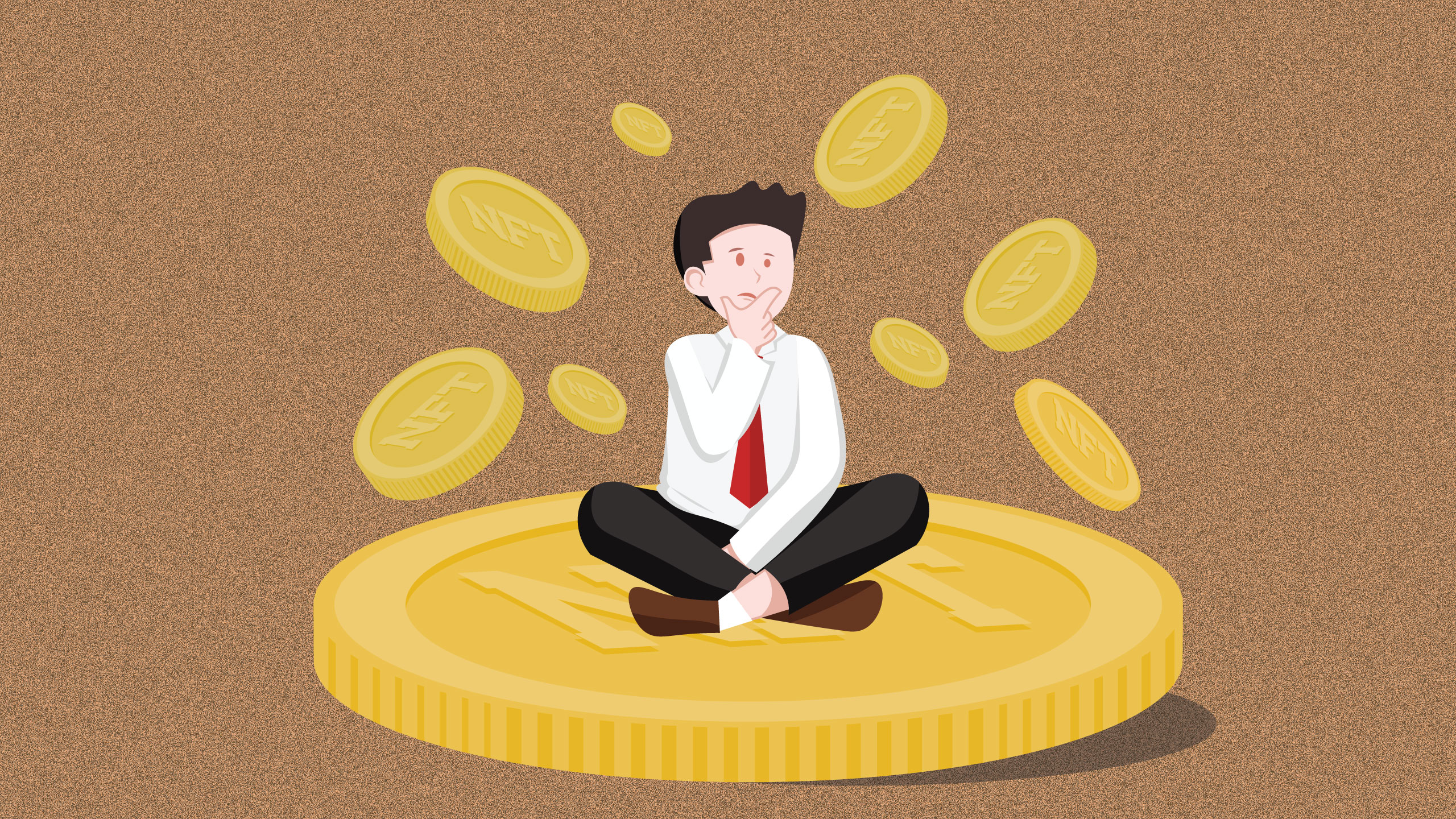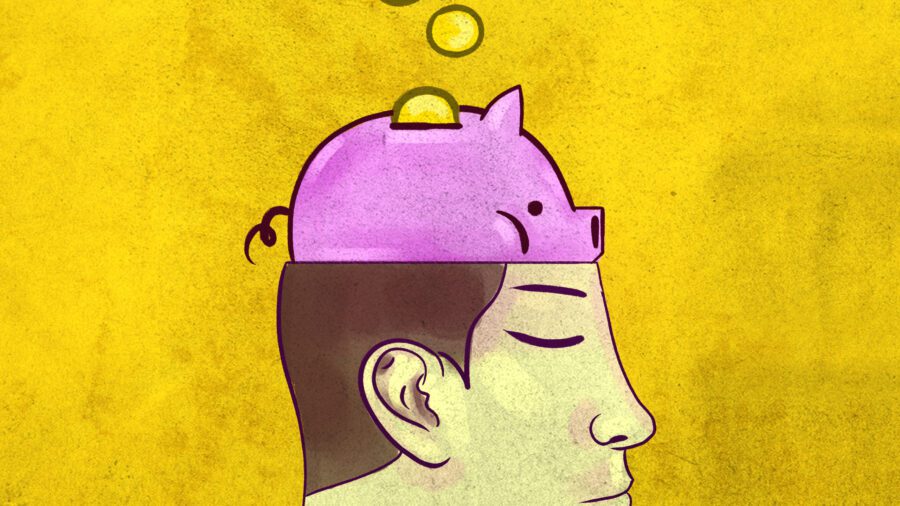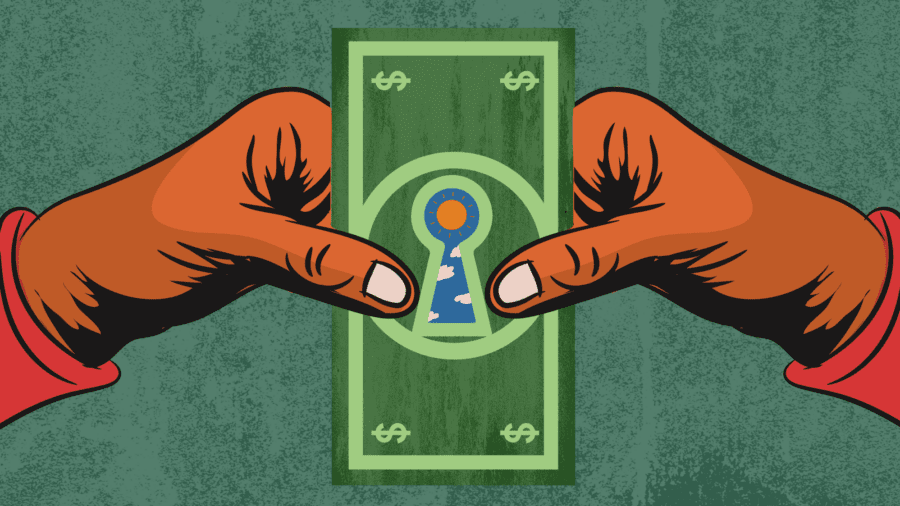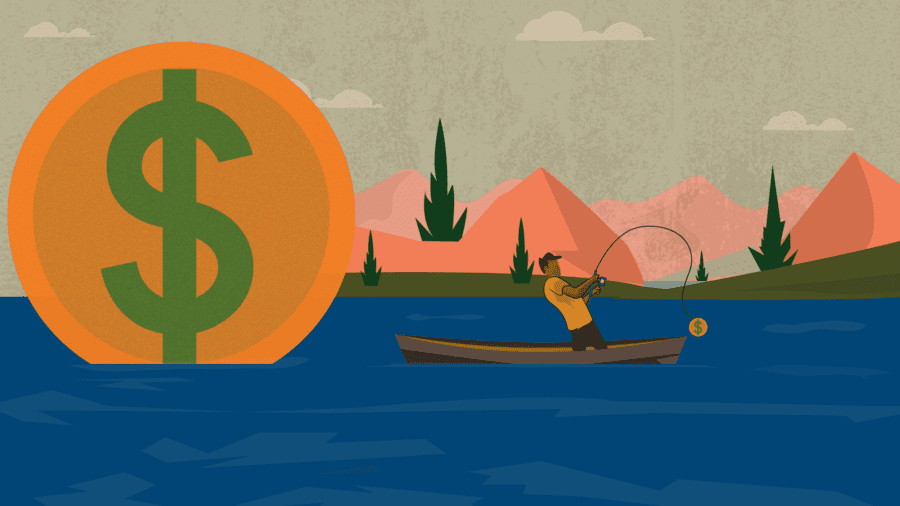
A Beginner’s Guide to Understanding NFTs, Their Risks, and Their Investment Opportunity
By now, you’ve likely heard of NFTs, but whether or not you understand what they actually are is a whole other story.
In the time since NFTs exploded in popularity and fell back down to earth, you may have heard someone mention “blockchain” or seen a news segment about “bored apes” that left you even more confused than you were to begin with. Did someone really pay thousands of dollars for an image of a monkey with a hat? How does that make any sense? Not to mention the numerous headlines about million-dollar hacks of NFT projects that may cause you to be wary of the subject altogether.
These are all fair concerns, and we’re going to address them in this article. If you’ve managed to go about your business without learning what an NFT is and want to learn more, you’re in the right place. Before we dive too deep into investment opportunities and marketplaces, let’s define the basics.
NFTs for Beginners
“NFT” stands for “non-fungible token.” Non-fungible basically means that it is entirely unique and cannot be replicated. As an example, the popular cryptocurrency Bitcoin is a fungible token, meaning you can trade one coin for another and receive exactly the same thing. A non-fungible token is exactly the opposite.
Think of it like trading one-of-a-kind baseball cards. You can trade one for another of equal value, but you can never find the same one twice. This is basically how NFTs work. However, if you have any familiarity with the internet or computers at all, you might wonder why you can’t just take a screenshot of these digital images and say they’re yours. Well, that’s where the blockchain comes in.
What’s Blockchain?
Blockchains offer a way to store information securely and reliably without relying on any single organization or person to maintain this trust. This is the type of technology that most people mean when they say “blockchain,” though there are a few caveats. NFTs are maintained on a blockchain so that the original digital file remains secure and also so the true owner can prove their ownership of the NFT.
NFT Examples
Although other blockchains may also allow NFTs, Ethereum is where they are most commonly stored. An NFT is “minted” from a collection of digital objects that stand in for both real and abstract things, such as:
- Graphic art
- GIFs
- Videos and sports highlights
- Collectibles
- Virtual avatars and video game skins
- Designer sneakers
- Music
Even tweets can be considered NFTs. Jack Dorsey, co-founder of Twitter, made almost $2.9 million from the sale of his first tweet in the form of an NFT. When someone buys an NFT, they receive a digital file rather than a physical oil painting to put on their wall. They are also granted sole ownership of the property.
The use of blockchain technology in NFTs makes it simple to verify ownership and transfer tokens between owners, despite the fact that each NFT can only have one owner at a time. The creator can additionally include custom data in the metadata of an NFT. Artists, for instance, can put their signatures on files as a means of authentication.
What Do You Use an NFT For?
NFTs are, essentially, a new way for artists and content creators to earn money from selling their art. For instance, art dealers and auction houses aren’t necessary for artists to make a living. Instead, the creator can bypass the middleman and sell the NFT to the end user, pocketing a larger portion of the sale’s proceeds.
Additionally, creators can set up royalties to be automatically collected from each sale made of their work. Given that artists typically don’t see any more money after their artwork is sold, this is a very appealing perk.
Making money through art isn’t the sole use for NFTs, however. Some companies, including Charmin and Taco Bell, have used NFT art auctions to benefit good causes. Taco Bell’s NFT art and Charmin’s “NFTP” (non-fungible toilet paper) were both snapped up in minutes.
In February of 2022, a pop-tart-bodied cat GIF from 2011 called “Nyan Cat” fetched over $600,000, and NBA Top Shot has produced over $500 million in sales. Over $200,000 was paid for a single highlight NFT from LeBron James. Even celebrities like Snoop Dogg and Lindsay Lohan have gotten in on the NFT craze by releasing their own artwork in the form of securitized NFTs.
How Did NFTs Become So Popular?
Despite having been established since 2014, NFTs saw a surge in popularity as a means of transacting in digital art. The value of the NFT market reached an astounding $41 billion in 2021, which is close to the sum total of the value of the worldwide fine art market. NFTs are typically one-of-a-kind or extremely rare, and some even claim that NFTs essentially create digital scarcity.
This is in stark contrast to most digital works, which are typically available in an endless quantity. Assuming there is a demand for a certain asset, limiting the available supply should theoretically increase its value.
However, many NFTs have been digital compositions that already exist in some form elsewhere, such as famous video clips from NBA games or securitized versions of digital art that are already circulating on Instagram. Perhaps the most well-known NFT during its boom was “EVERYDAYS: The First 5000 Days,” which was created by the famed digital artist Mike Winklemann, better known as “Beeple,” and sold at Christie’s for a record-breaking $69.3 million.
Digital images are available online for free viewing by anyone who wants to see them individually or as a whole collage. So why do people shell out millions for something they could have for free online? It all boils down to the fact that the buyer gets to keep the original.
Additionally, it has in-built authentication that can be used as a kind of ownership verification. Those “digital bragging rights” are almost as valuable to collectors, or NFT investors, as the actual thing itself.
You might be thinking, Okay, I understand that through the blockchain, I can verify that I have the true original of an NFT and not a copy. However, I still don’t understand why someone would pay thousands of dollars for an image you can screenshot.
Is It Illegal to Screenshot an NFT?
Since NFTs are pieces of digital art that someone else has created, you can get sued or otherwise into legal trouble if you screenshot someone else’s art and attempt to pass it off as your own. For example, if you took a high-quality photograph of a Monet painting, printed that painting off, and tried to pass it off as your own artwork, you would be stealing someone else’s art. Even if procedurally generated images of chimpanzees seem silly to you, they are considered art by NFT collectors, and many collectors pay thousands of dollars for them.
Join In 200 Million+ On The Journey to Greatness
Should You Buy an NFT?
Okay, so maybe you have the means to become an NFT investor and collect unique pieces of digital art, but does that mean you should?
NFTs are dangerous since their outcomes are hard to predict, and there is not much data available on which to base performance evaluations. Given NFTs’ infancy, it could be worthwhile to spend modest sums initially. Putting money into NFTs is a choice that each individual must make for themselves. It’s something to think about if you have the means, especially if the item has personal significance.
In any case, keep in mind that the worth of an NFT is determined only by the price someone is willing to pay for it. Stock prices are frequently influenced by fundamental, technical, and economic indications, but investor demand is ultimately determined by supply and demand. This means that the value of an NFT you buy secondhand may be lower than the price you paid for it. If no one is interested in buying it, you might not be able to resell it at all.
Like stock sales, NFT gains are taxable as capital income. The IRS has not yet ruled on what NFTs are classified for tax reasons; nevertheless, if they are deemed collectibles, they may not receive the advantageous long-term capital gains rates stocks do and may even be taxed at a higher collectibles tax rate.
You should absolutely consult a tax expert before adding NFTs to your portfolio because the cryptocurrency you used to buy the NFT may be subject to taxation if its value has increased since you bought it. However, NFTs should be treated like any other investment. Thoroughly investigate them, be aware of the hazards (including the possibility of incurring a whole loss of investment funds), and proceed with caution if you ultimately decide to invest.
If you do want to proceed and are wondering what the best NFT marketplaces are to sell or buy, we have you covered. Let’s look at some of the most popular marketplaces investors and collectors are using today.
Best NFT Marketplace
First things first — you have to acquire all the necessary tools. To start, you’ll need a cryptocurrency or NFT-compatible digital wallet. Depending on the currencies your NFT service takes, you may have to buy some cryptocurrency, such as Ether.
These days, you can use your credit card on exchanges like Coinbase, Kraken, eToro, PayPal, and Robinhood to purchase cryptocurrency. After that, you can transfer it from the trading platform to your preferred wallet. When considering your alternatives, be sure to factor in any associated costs. When you make a cryptocurrency purchase, most marketplaces will take a small cut of your total.
OpenSea.io
OpenSea.io is a P2P marketplace for “rare digital objects and collectibles,” as the site puts it. To begin exploring NFT collections, you just need to sign up for a free account. You can find new artists by browsing works based on their sales volume.
Rarible
Like OpenSea, Rarible is a decentralized, open market where individuals can buy and trade NFTs created by other individuals. By holding RARI tokens, users have a say in platform cost structures and rule implementations.
Foundation
With Foundation, submissions are only shown to other members of the creative community if they have received enough “upvotes” or have been invited to do so. The community’s high barrier to access (artists need to buy “gas” to mint NFTs) and rigorous standards for participation (resulting in higher quality work) suggest that its art may be more impressive than that seen in other communities. If the demand for NFTs holds steady or increases, this might lead to increased prices, which isn’t always bad news for artists and collectors looking to make a profit.
Many thousands of NFT makers and collectors can be found on these and other sites, but before you make any purchases, it’s important to do your homework. Many artists have had their work fraudulently listed and sold by impostors.
Not all platforms are created equal when it comes to their verification policies for creators and NFT listings. For NFT listings, exchanges like OpenSea and Rarible don’t check ownership. Since it appears that consumer protections are minimal at best, it’s probably wise to exercise caution when shopping for NFTs.
NFTs: Investment Opportunity or Cautionary Tale?
Like everything in the digital world, NFTs change fast. What someone purchased for millions of dollars yesterday may be worth far less today. However, caution should be exercised when making any type of investment, whether traditional or something new like an NFT. Are NFTs here to stay? We can’t be sure, but they are certainly filling the pockets of talented artists who sold their artwork.
Whether or not you should invest in NFTs is entirely up to you. In any case, trust your instincts and do your research before making any sort of monetary commitment!
Greatness Authors
Greatness Authors is a collection of writers, thinkers, curiosity experts, and students of the world who are committed to bringing you the most up-to-date, impactful, and inspiring information surrounding Greatness topics.

Before You Retire, Ask Yourself These 7 Financial Questions to Make Sure You’re in the Clear

The *New* Way to Market Your Business on YouTube & Best Practices for Higher Engagement

The Power of Masterminds to Grow Your Business and How to Find One Near You

4 Inspirational Stories That Prove Money Isn’t the Key to Happiness

A Beginner’s Guide to Building a Great Credit Score While Avoiding Debt and Common Credit Mistakes










